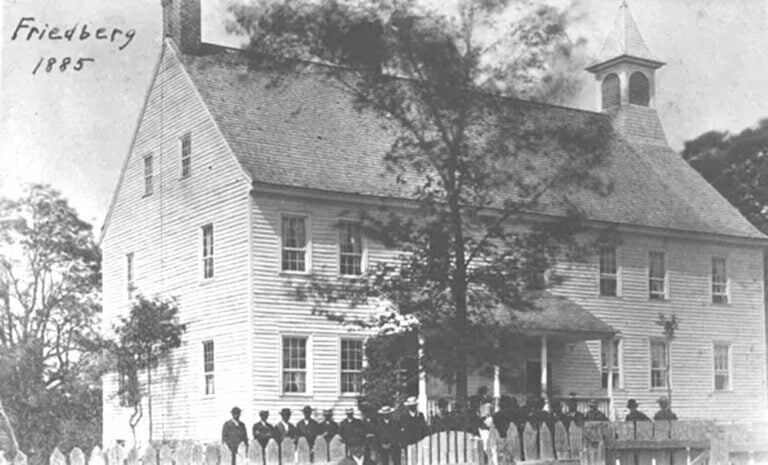Where Two or Three Are Gathered
For centuries, the Moravian Church has identified itself with a constant brotherly communion and a desire among its body to witness a Christian faith in which it is so ready to serve, in both worship and in everyday life. Perhaps it was this undying devotion to the service of our Lord Jesus Christ that sparked interest from a young German Lutheran living in Manokasy, Maryland, in the mid-Eighteenth Century. Born in Pfaffenholen, Germany, in 1720, Adam Spach came to America at the age of thirteen. For six years Adam lived in Maryland, where he came in contact with the Unitas Fratrum, or “Unity of Brethren,” as the Moravians were called then. In 1752, he married Maria Elizabeth Hueter, and two years later they left for the Moravian land purchase of Wachovia, in North Carolina.
Early Community
Adam Spach and several other Brethren established a growing community just south of Wachovia. In 1759, Bethabra (the nearest Moravian settlement at the time) sent a lay minister by the name of Ludolph Gottlieb Bachlof to the little community. Br. Bachlof led services in the home of Adam and Maria Spach, with more following at intervals over the next few years.
The years that followed the birth of Friedberg saw the community grow in number and fellowship. A new church building with attached parsonage was consecrated in 1788, extensively remodeled and rededicated in 1825, and a new steeple added in 1882. In 1866, Friedberg experienced a revival when over 60 members joined in one year. A new parsonage was built in 1900 when the sanctuary was again remodeled and expanded. The now-famous chicken pie suppers began in the 1920s, and in 1928 Friedberg organized a band.


The years that followed the birth of Friedberg saw the community grow in number and fellowship. A new church building with attached parsonage was consecrated in 1788, extensively remodeled and rededicated in 1825, and a new steeple added in 1882.
In 1866, Friedberg experienced a revival when over 60 members joined in one year. A new parsonage was built in 1900 when the sanctuary was again remodeled and expanded. The now-famous chicken pie suppers began in the 1920s, and in 1928 Friedberg organized a band. A final renovation was completed in 1938, with the addition of a balcony and large vestibule, the latter making the entrance to the sanctuary facing the road, rather than towards the present-day parsonage as it had formerly been.
Sunday School has been an important part of the life of Friedberg since the first classes were held in 1823. Throughout the years they have provided a hub for Bible study, fellowship, missions and outreach for the church. They have also grown beyond the walls of Friedberg, as the neighboring Advent and Enterprise Moravian churches trace their origins to being Sunday schools of Friedberg.
Growth and Change
During the 1960s, plans were drawn for a completely new church building, including a new sanctuary with a fellowship hall (the two matching in architectural style), and a Christian education wing joining the two. In 1967, the education wing and fellowship hall were completed, and in 1973, new plans for the sanctuary (redrawn to match the architectural style of the 1938 building) were approved, seeing completion and dedication in 1979.
The 1980s and 1990s saw another revival at Friedberg, when the congregation nearly doubled in size. Seeing future growth as inevitable, plans were approved for a large multi-purpose facility. Dedicated in 1999, the Family Life Center, architecturally harmonious with the sanctuary, houses classrooms, modern expansion to the old kitchen, the preschool facility, and a multi-purpose gymnasium/fellowship center with a soundstage.
To accommodate evolving communication methods and expand the reach of the church ministry, a multimedia project was completed in 2018. The project upgraded the audio/visual capabilities in the sanctuary and Family Life Center, enabling the first live streamed worship service to be broadcast later that year. Since it’s inception, the live streamed services have drawn worshipers from all over the country, including those who have joined membership with the church remotely.


Like our Moravian founders, our direction has always stayed in the service of Christ. And so it is Friedberg’s character, as it has been for over 200 years, to be “salt and light” in the world, as we strive to express our faith through our life – a life we have only found in the life sacrificed for us by God’s only Son, Jesus Christ.